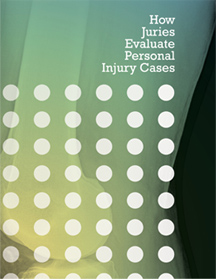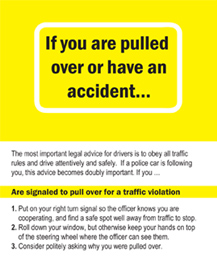How an adjuster will evaluate your case
Here are some insights on how adjusters and claims people evaluate claims.
Past medical bills
All other things being equal, the higher your medical bills the more the case is worth. Adjusters will, however, balk at paying or weighing these heavily if they believe that the medicals have been “goosed up” or that you were steered to a medical treatment “mill” to inflate the bills.
The best method to avoid raising this suspicion is for you to locate your treating doctor yourself rather than be referred by your personal injury attorney. Additionally, once treatment has been initiated, the treating medical provider should refer you to a highly qualified and respected board certified specialist to confirm the treatment and recommend future care as well.
Future medical bills
For some injuries, future treatments are foreseeable. Your accident attorney should get a doctor’s opinion to this effect and an estimate to include in the packet of materials sent to the insurance company demanding a settlement.
Past wage loss
How much time did you lose from work due to the injury? Can you document it? Be prepared to do so. This means your accident attorney must obtain:
- A written report from a doctor stating that you were disabled for a specified length of time.
- A statement from your employer, verifying hourly wage or salary and absence of work for the time-period mirroring the doctor’s dates.
If you lack these, expect the adjuster to refuse to factor wage loss into your damages, especially, if your claimed lost earnings are a disproportionate amount of your total economic losses; or if the length of the disability seems out of whack, given “normal” recovery times for comparable injuries.
Future wage loss
Aside from the time you have already lost from work, how about likelihood of future wage loss? You can’t wait years until you know for sure before your personal injury attorney submits lost future wages as part of the demand package. Future wage loss might include: diminished earnings from a permanent disability, hospitalizations for future surgeries which may be needed, time off for continued physical therapy and medical treatment. To thwart the adjuster’s normal responses, your personal injury attorney should get a written medical opinion documenting these. A cover letter asserting that these are damage components will not, by itself, carry weight in negotiating the settlement.
Liability
How clear of a case of liability do you have? Are you in a comparative or contributory negligence state? Were you at all at fault for the accident? Will the adjuster point fingers at another party, rather than its insured, and try to discount the settlement in that way?
If there are soft spots, expect the adjuster to probe them and use these as “discount points” in whittling down any offer.
Your accident attorney must do his or her homework. The attorney’s investigator should provide a thorough report and, assuming the report is favorable, provide the report to the insurer (if it is 100% favorable).
Your accident attorney should make the same presentation to the adjuster that will be made to the jury to overcome defense objections. The goal is to convince the adjuster that the objections have little merit and will be defeated at trial.
Aggravating factors (pertaining to defendant)
This includes prior court awards against the defendant or large settlements. If the defendant has been in the media for business missteps, the defendant may be less likely to endure a public court battle. Are there any criminal charges pending against the defendant? Has there been federal government action by the EPA, the Food and Drug Administration or OSHA? Has there been state or local government action that provides an unfavorable backdrop for a defendant?
Your accident attorney’s track record as claimant/plaintiff counsel
How many cases of this type has your personal injury attorney handled before? Did he or she win, lose or leverage a big settlement? An accident attorney seasoned in a particular specialty can be more confident in his or her negotiating approach.
Outside valuation sources
Your accident attorney should seek external sounding boards to “price” your case to appraise its true worth. Tools include:
- Round-table discussion with other attorneys.
- Anecdotal experience of comparable claims and awards.
- Published reports of similar cases.
- Valuation software, such as that available from Jury Verdict Research, Inc.
Special factors
- Time-lag between accident and report of injury. You may think it’s irrelevant, but the adjuster probably won’t. (In fact, a jury might also think it’s relevant.) The longer the time-lag between an accident and report of an injury, the higher the skepticism with which the adjuster will view the claim. Be ready to explain why, at the accident scene, you denied injury, but visited the emergency room three days later. Be prepared to explain why the “History” section of a medical report makes no mention of the accident.
- Medical history as related to first caregiver. Expect the adjuster to scrutinize medical records of the first caregiver, focusing on the history given. If that history says nothing about an accident, is silent on the point, or attributes the injury to a pre-existing condition, expect adjuster resistance.
- Your prior claim and medical history. If you have a lengthy Index Bureau print-out, reflecting a brisk history of prior claims, you can rarely expect fast-track handling of your injury claim. In fact, the insurer may suspect it is dealing with a “professional claimant” and arrange surveillance on you or even refer the file to one of the growing number of in-house “Special Investigation Units” (SIU’s), a euphemism for (anti-) fraud investigation. One of the best methods to minimize this problem is to establish that prior injuries and claims concern completely different portions of your body, assuming this is true.
- Identity and local reputation of treating physicians, therapists, etc. If your soft-tissue treatments seem built-up to inflate your expenses and pain and suffering, you may face a tussle with the claims adjuster. Adjusters look for certain “red flags” on bodily injury claims:
- Is the treating doctor known for running a local “plaintiff mill,” specializing in treating patients with insurance claims? Does the doctor advertise on TV or in the phone book Yellow Pages for personal injury “victims?”
- As to the contention that the doctor is running a “mill,” your personal injury attorney can minimize this argument by stating that the reason the doctor has many patients is because he is a good doctor, has been in practice for many years, has impeccable credentials, has published (to the extent applicable), and so forth.
- Is treatment high level and high cost relative to little or no property damage?
To minimize the argument that the treatment is disproportionate and excessive level, your attorney should have a board certified orthopedic surgeon (assuming a spinal injury) indicate that it is a nonsequitur to assume that small property damage equals a minimal injury since the carrier’s position is medically inaccurate. - Does the treating doctor frequently serve as the physician for patients represented by legal counsel, or even by a particular law firm?
- To respond to the contention that the treating doctor is plaintiff-oriented and serves as a physician for patients primarily represented by legal counsel, your attorney should emphasize the doctor’s experience and qualifications.
- Is the treatment frequency disproportionate to the nature of the injury?
- To respond to the assertion that the treatment was disproportionate to the injury, your accident attorney can obtain a report from a board certified medical doctor showing that the amount of treatment was medically necessary and appropriate.
- Do the medical reports appear as if they have been run off a word processor?
- This is a problem since many doctors who specialize in treating patients who have been in accidents charge a considerable amount for these reports and they are often the same reports time after time with slight variations. For example, if three people in the family are involved, the reports may be identical with changes only to the names of the parties. Your accident attorney can tell the doctor to keep the reports customized and to emphasize residuals.
- Do the damages include chiropractic bills?
- There is no question but that adjusters are less impressed by doctors of chiropractic than board certified orthopedic surgeons. After a minimal amount of chiropractic treatment has taken place, it’s a good idea for you to see a board certified medical doctor to confirm the amount of treatment, the appropriateness of the charges to that point, and their necessity.
Like the warning lights on your car’s dashboard, these are flashing “red lights” on the adjuster’s bogus-sensors as he or she evaluates any injury claim. Each sticking point is surmountable, but you and your attorney should anticipate these parries and prepare to address them. If you don’t or can’t deal with them from an adjuster, you will have to grapple with them later after you bring a lawsuit.
Insurance claims present special challenges in claim evaluation and negotiation. By their very nature, some common injuries — particularly those of the soft tissue variety — are less visible, causing adjusters to view them with heightened skepticism. By knowing in advance the valuation soft spots where adjusters are more likely to probe, you and your attorney can better prepare for the settlement negotiation process and increase the odds of a favorable settlement.



